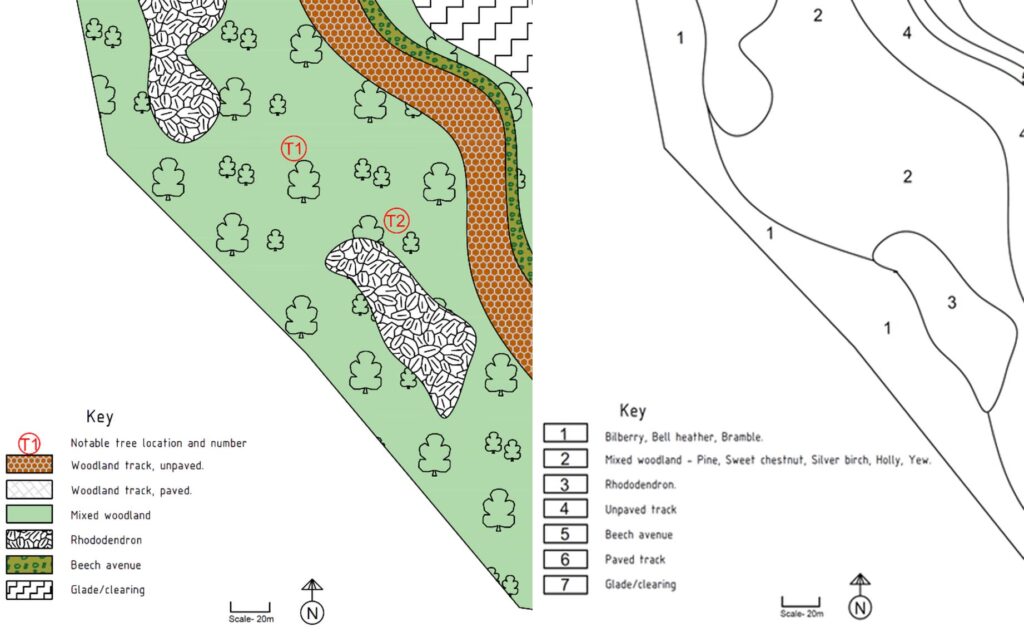ArbSolve will devise a management plan for your woodland or special trees with prioritised objectives over short, medium and long term timescales. The SMART objectives will be formed in relation to your project’s Aims, such as conservation, landscape value, or recreation.
| OBJECTIVE | SHORT TERM TIMESCALE | MEDIUM TERM TIMESCALE | LONG TERM TIMESCALE |
|---|---|---|---|
| Increase deadwood habitat to 20m³ per hectare. | Year 1- Import 20 tonnes of locally sourced hardwood (<15 mile radius) of varying diameters to allow differing rates of decay. Tasks will be achieved after spring flowering has passed. – Deadwood will be from mixed species (same as existing species) and will include single pieces and small piles. It will be scattered throughout the site in the spring/summer to avoid locations of flowering field layer species. -Works must be undertaken by suitably qualified operatives working to BS3998:2010 Tree work. Recommendations. | Ring bark 3 trees of varying species every 2 years for 10 years to create standing or further fallen deadwood. | At year 20, review the percentage of deadwood standing and fallen against a requirement of 20m³ per hectare. Make additions if required. |
- Performance Indicators will be set up for each Aim to ensure that the Objectives are meeting the minimum success thresholds for the project.
- Woodland operations will be specified at set times to meet the set objectives.
Timescales
Setting timescales for each stage are important as they allow for an audit trail of processes. Timescales also allow the objectives to be reviewed and adjusted accordingly. Typical timescales for project objectives are (Reviewed every 3-5 years):
- Short term 1-5 years
- Medium 6-15 years
- Long term – 16-25 years

